RedLancer
Posts: 4314
Joined: 11/16/2005
From: UK
Status: offline

|
In this second showcasing of War in the East 2 we are going to focus on the weather system. We’ll describe it in three elements – how weather is generated in game, the impact on air operations and finally the impact on ground operations.
WitE2 has a highly complex and dynamic weather model that generates realistic weather in an ever-changing manner. Few games will see identical weather patterns adding a new dimension to your wargaming experience.
The playable area of WitE2 is part of a much bigger map that stretches from the Atlantic to the Urals. Within this large area are eight different climate zones that define the accustomed prevailing weather characteristics within that area across the normal cycle of the seasons. These can be seen on the weather screen.
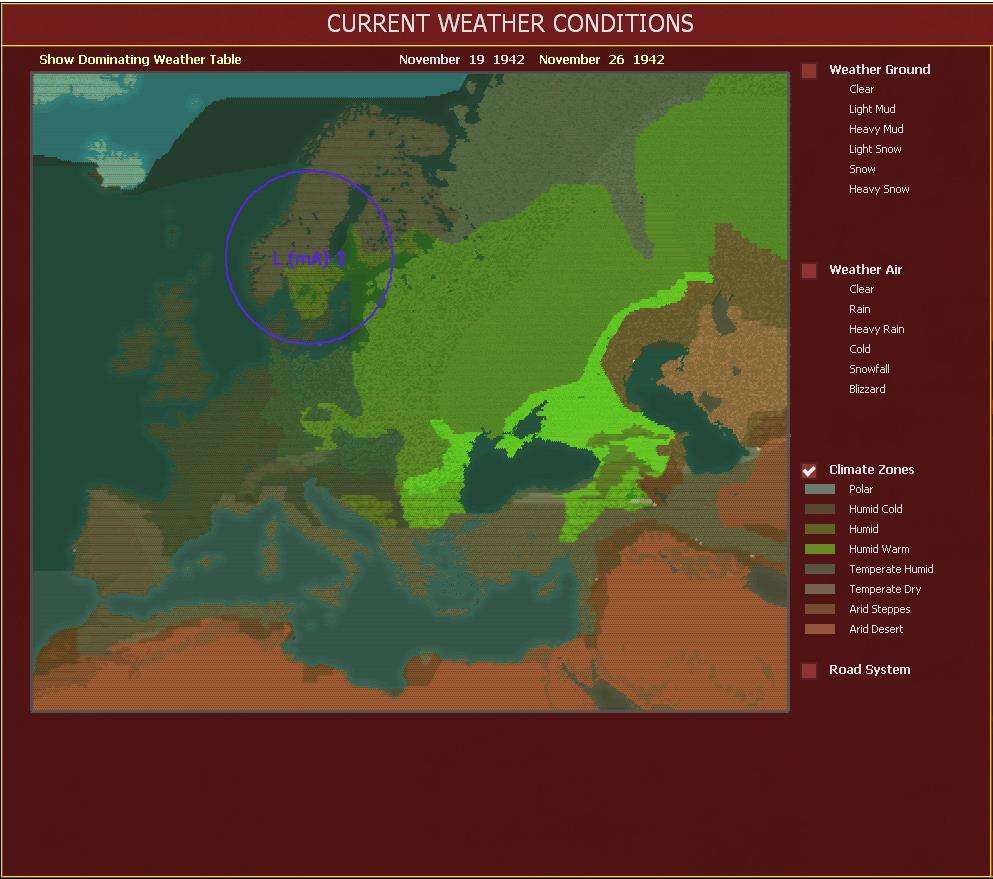
To add yet more variation the weather in the climate zones can be further modified by the passage of weather fronts that move across the map. There are five different weather fronts that reproduce the Earth’s customary meteorological behaviour: entering the map and influencing the weather across hexes in a characteristic fashion. The screenshot above shows a Low Pressure Maritime Arctic Front over southern Sweden.
For example a Polar Continental Front will change a hex that would have been Clear to Cold in November to February but will leave the weather as clear at any other time of the year. If the hex would have had Rain in the period November to February this will change to Snow. In the same period, if the hex would have had Snowfall, a Polar Continental Front will replace this with Blizzard conditions.
The weather screen shows the movement of these fronts across the map. The weather changes before the Soviet phase (in other words the German turn uses the same weather as the preceding Soviet turn). This reflects the Soviet Union’s (and its Allies) better weather forecasting capability. You are able to see a prediction of the following turn’s weather but true to form it is not wholly accurate.
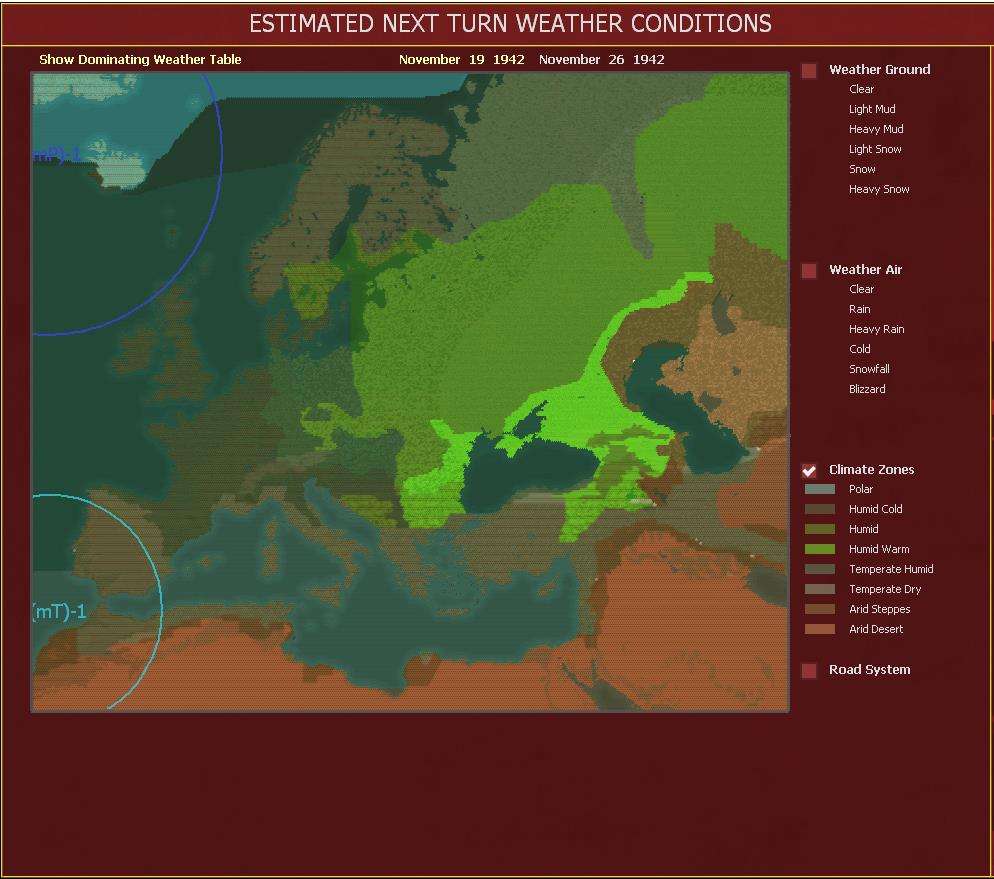
As the five types of front move across the eight zones they create a range of six different air conditions: Clear, Rain (representing light rains - summer rains, no more than 2-3 days a week), Heavy Rain, Cold (light snow, clear sky most of the time), Snowfall (more regular snowfall with more cloud cover) & Blizzards (snow storms and very low temperatures). These air conditions are tracked by turn in each individual hex; allowing the impact on the ground to be calculated. Rain will lead to mud, cold will result in freezing, whilst clear will dry the ground. There are six ground conditions: Clear, Light Mud, Heavy Mud, Light Snow, Snow and Heavy Snow that result from the air weather. The actual hex conditions are tracked by the water and snow value of the hex which you can see those values in hex popup.
The weather screen allows you to see a summary of either the air or ground weather across the map. The composite image below compares screenshots of air on the left with ground on the right.
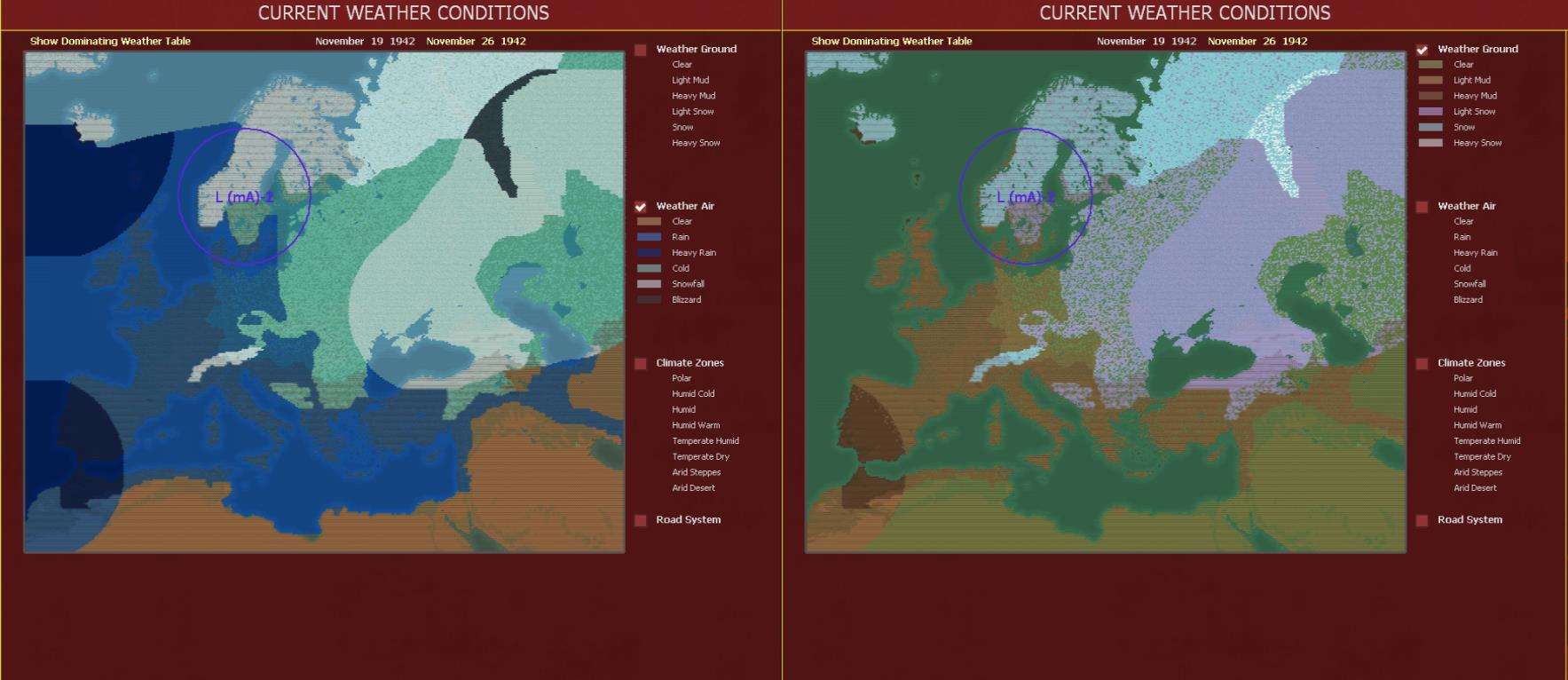
The map art also changes with the weather as this created picture shows.
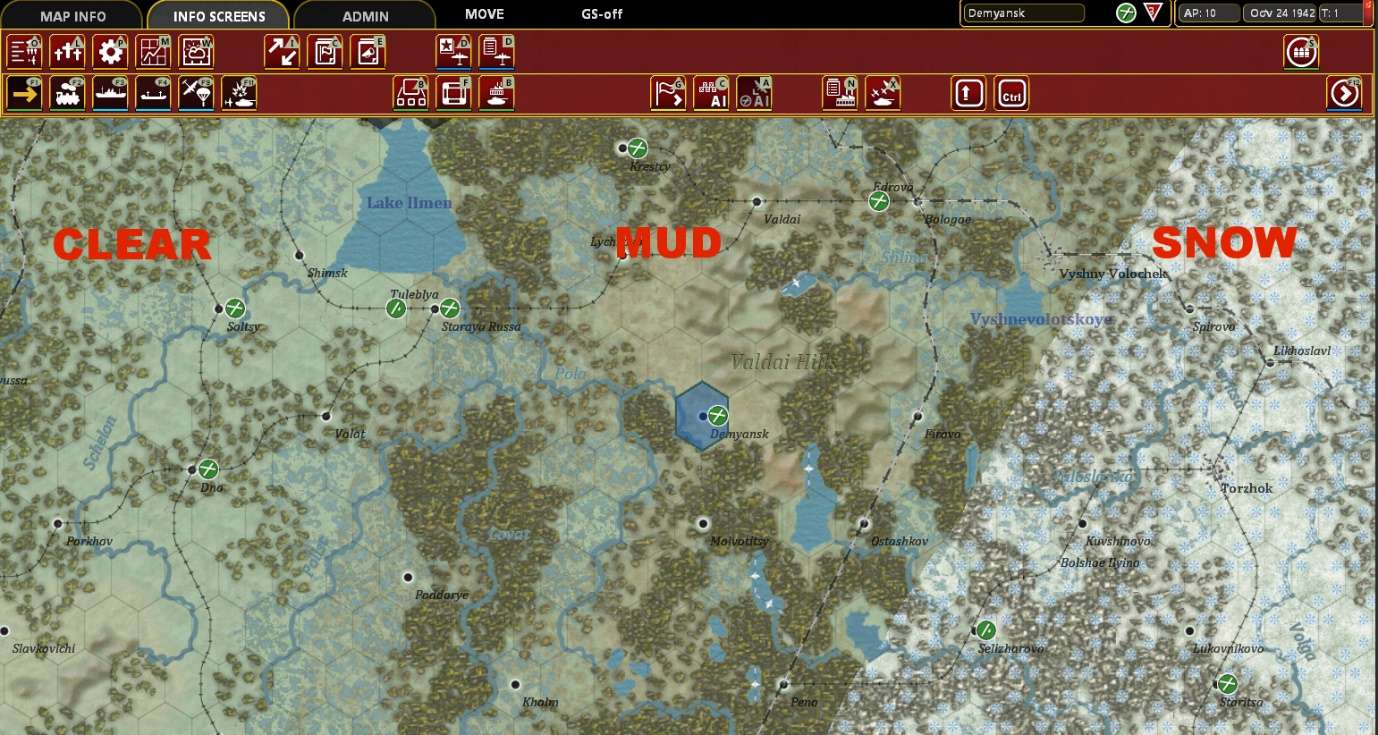
Of course, all the effort that has gone into creating this system is to make the game a more enjoyable and realistic experience. The air and ground weather impacts combat and movement for air and ground units. You can see the precise weather in a hex via the mouse popup.
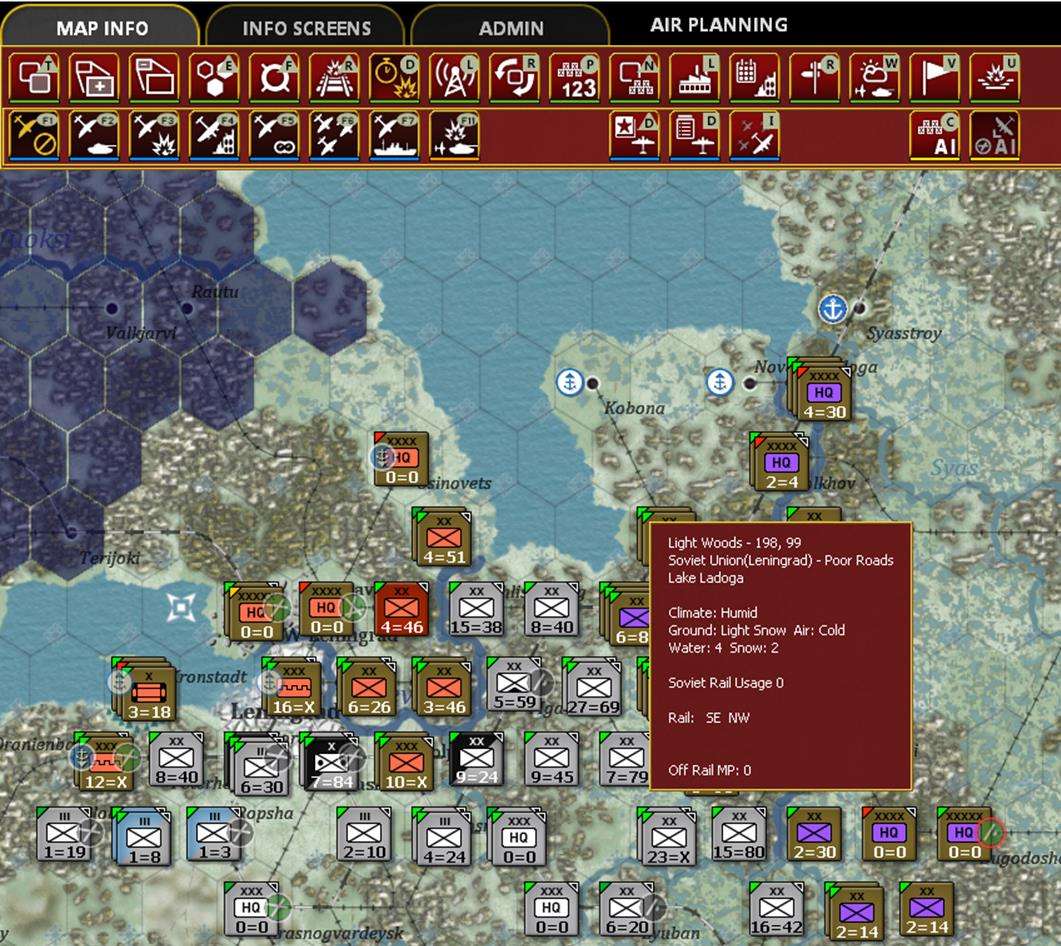
The air weather in a hex sets a percentage of cloud cover. This not only can reduce the effectiveness of an airstrike (particularly ground support) but also lead to higher operational losses. Cloud cover also has an effect across an entire air mission’s flight path. When we look in more detail at air operations you will see that you can set your air units not to fly in worsening conditions.
Ground weather has more of an impact but only on each individual hex and you will find that adjacent hexes will often not share the same conditions. Essentially mud and snow make movement more difficult and costly. Frozen rivers and lakes are easier to cross. Now that we have road values set in every individual hex we have been able to factor them into the equation too. Hexes with roads are less effected by the ground conditions. Together with admin movement (which we looked at in the last post) and the impact of weather costs, you get a much more sophisticated grid of costs for moving through hexes depending on terrain, roads, weather and admin or tactical movement. Moving a motorized unit into a good road swamp hex in heavy mud via admin movement will only cost 3 MPs, while if it was a bad road hex it would cost 13 MPs. Moving tactically would cost the unit 6 MPs in good roads or 14 MPs in bad roads. This shows in bad terrain and heavy mud, admin movement doesn’t gain you much. However, with a good road, things can be very different. Here a unit in heavy mud conditions will pay only 1MP to move one hex.
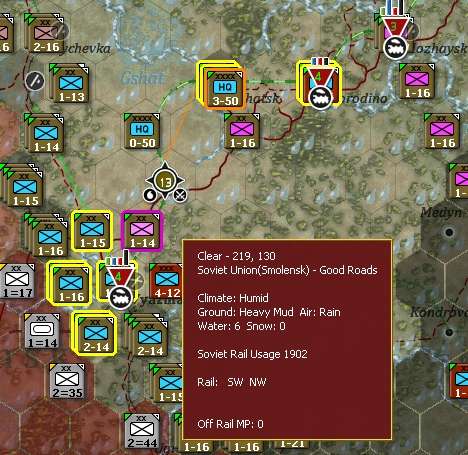
So planning with roads in mind is a good idea. You can also see an overview of the road system via the Weather screen.
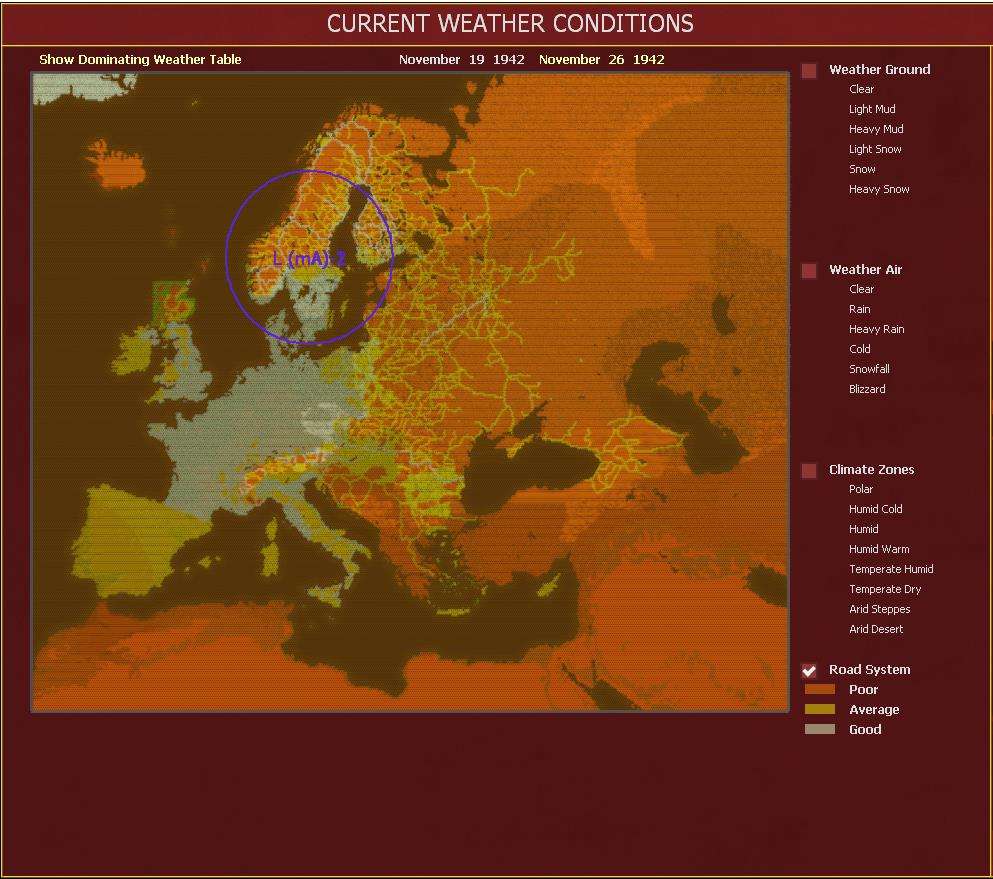
Finally there are a few special rules that are worth mentioning and which we can elaborate on if you want to ask questions. Firstly, although blizzard may not be guaranteed in December 1941 up until the end of March 42 the Axis player will pay double the normal weather movement costs and rail is affected by the amount of snow and blizzard. Additionally there are increased attrition rules to reflect the impact of extreme cold, weapon malfunctions and frostbite. The winter of 1943/44 was un-seasonally mild so during that time the weather model is more clement with snow and blizzard. Both Lake Ladoga and the Sea of Azov have special supply rules for when they are frozen and this happens irrespective of the wider dynamic weather system.
Next time we’ll look more at logistics.
_____________________________
John
WitE2 Asst Producer
WitE & WitW Dev
|
 Printable Version
Printable Version
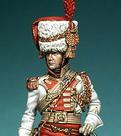













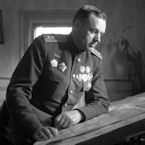






 New Messages
New Messages No New Messages
No New Messages Hot Topic w/ New Messages
Hot Topic w/ New Messages Hot Topic w/o New Messages
Hot Topic w/o New Messages Locked w/ New Messages
Locked w/ New Messages Locked w/o New Messages
Locked w/o New Messages Post New Thread
Post New Thread